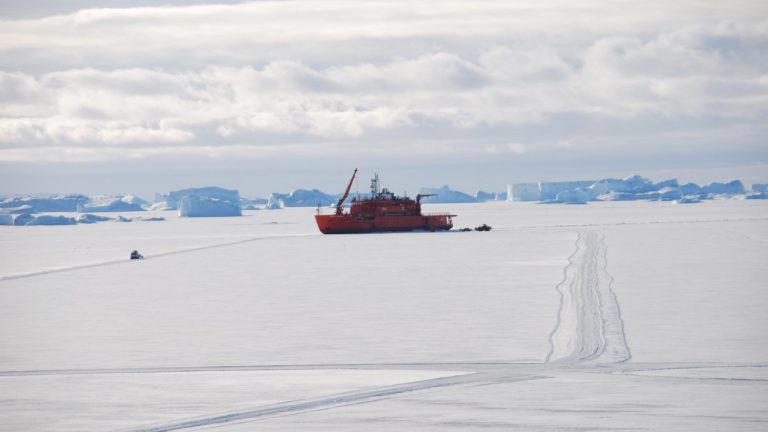Link to the EDOC page with all EPFL Distinction winners
Winners of the
“EPFL Outstanding Ph.D Thesis Distinction in Civil and Environmental Engineering”
2023
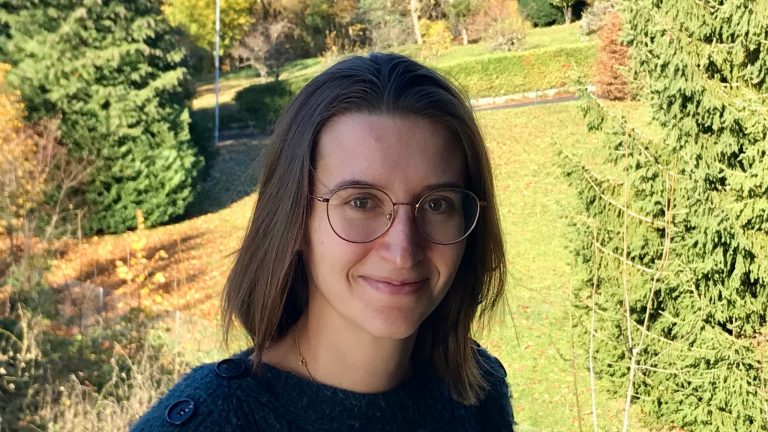
Ph.D. in the Environmental Remote Sensing laboratory, LTE
Thesis title: Snowfall microphysics: a dual-frequency and Doppler spectral radar perspective
Snowfall is an essential component of the hydrological cycle, as it is involved in most precipitation on Earth, either directly as snow falling to the ground or indirectly as rain melted from snow. At the same time, the ice phase in clouds and precipitation is a key contributor to the Earth’s radiative budget, making it a crucial aspect of climate-oriented research. Properly modeling snowfall for both weather and climate applications requires knowledge of the “microphysics of snowfall”, that is, a microscale description of snow particles and of the mechanisms by which they form, grow, and decay.
Among different approaches to studying snowfall microphysics, remote sensing techniques and, in particular, meteorological radars, offer decisive insights. The goal of my thesis was to investigate the microphysical properties and processes of snowfall by relying primarily on measurements from radars transmitting at different frequencies and on radar Doppler spectra – which disclose how radar signals are distributed between large, fast-falling, and small, slow-falling particles.
One aspect of my work consisted in collecting a multi-sensor dataset of in situ and remote sensing measurements of snowfall, during a field campaign in the Swiss Jura mountains. I then introduced new methods to retrieve cloud and snowfall properties from remote sensing measurements, making use of cutting-edge machine-learning techniques. With a slightly different perspective, I then focused on a specific snowfall event: there, we showed that a lot could be learnt, using radar measurements, about certain ice growth and multiplication mechanisms which are still poorly understood. Overall, this work sheds a new light on remote sensing studies of snowfall microphysics, both in terms of quantifying snowfall properties, and understanding the complex processes at work.
As a postdoctoral researcher at the Environmental Remote Sensing laboratory, I am currently working on a continuation of the research questions I explored during my thesis. My goal is to better characterize the intrinsic limitations and uncertainties of such radar-based studies of cloud and precipitation microphysics, to understand how far we can hope to take them.
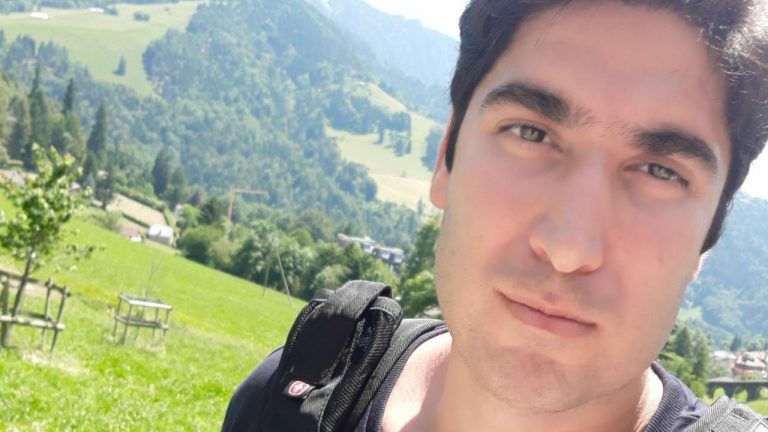
Ph.D in the Ecological Engineering Laboratory, ECOL
Thesis title: Unraveling submesoscale processes associated with meso- and basin-scale gyres in Lake Geneva
The evaluation of biological, chemical, and physical processes within large lakes, alongside the study of how climate change impacts these processes, mainly relies on conventional single-station monitoring techniques. These methods overlook the lateral variability inherent in the three-dimensional (3D) processes occurring in large lakes. By integrating field observations, 3D numerical simulations, Lagrangian particle tracking, remote sensing data, and statistical analyses, my thesis investigates the dynamics of rotating coherent water masses and their associated submesoscale processes in Lake Geneva. The primary objective of my thesis was to detect and examine previously unobserved or studied 3D physical processes that have been overlooked in the field of limnology. Furthermore, the aim was to elucidate the implications of these dynamics for water quality heterogeneity.
First, a novel framework is developed that permits study the spatiotemporal characteristics of basin-scale and mesoscale processes during different seasons by allowing efficient design of field sampling strategies with unprecedented precision in time and space. Building on this novel framework, the existence of submesoscale processes caused by large-scale gyres is demonstrated for the first time in a lake. The dynamics of pelagic upwelling within a cyclonic gyre in Lake Geneva were investigated. The spatial heterogeneity of water quality parameters caused by (sub)mesoscale flow features is then revealed.
In general, my thesis offers new perspectives on how (sub)mesoscale processes impact the vertical exchange of heat, contaminants and oxygen between the atmosphere and the pelagic zone of large lakes, as well as in oceans where carrying out such field measurements is very challenging.
As a postdoctoral researcher at the CRYOS lab, I am currently involved in the UrbanTwin project. My main focus is on examining the impact of heat islands formed during heatwaves on the temperature of Lake Geneva, as well as investigating how climate change might affect the natural ventilation provided by Lake Geneva in the city of Lausanne.
Winners of the
“EPFL Outstanding Ph.D Thesis Distinction in Civil and Environmental Engineering”
2022
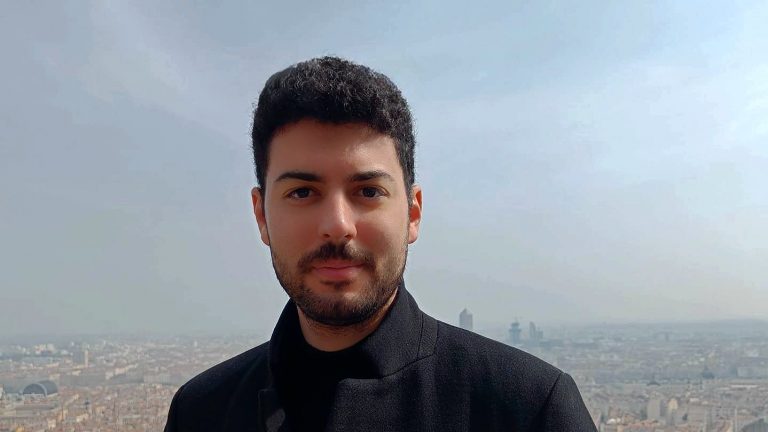
Ph.D. at the Resilient Steel Structures Laboratory, RESSLab
Thesis title: Welded Moment Connections with Highly Dissipative Panel Zones for Enhanced Seismic Performance of Steel Moment Frames
Research conducted after the 1994 Northridge earthquake in the U.S. and the 1995 Kobe earthquake in Japan led to the development of today’s welded beam-to-column connections for steel moment resisting frames in high-seismicity regions. To mitigate fracture-related issues, welded moment connections over the last 25 years feature rigorous weld details that are challenging from a fabrication standpoint. Moreover, the stable hysteretic response of the column web panel zones is not exploited, leading to concentration of damage in the steel beams in the advent of moderate earthquake events, thereby engendering structural repair costs.
My doctoral thesis aimed at advancing the state-of-knowledge regarding the seismic design and behavior of steel moment resisting frames with highly dissipative column web panel zones. Firstly, I developed a new panel zone model that addresses the limitations of available models in literature. The reliability of the developed model allows for a seismic design that exploits the beneficial aspects of panel zone shear yielding. One step further, in my thesis I revisited the current detailing of welded connections by proposing simplifications in their fabrication process, without impairing the connection’s ductility. Full-scale experiments of the proposed connection demonstrated that, contrary to the current design paradigm, a stable hysteretic response is achieved until unrealistically large lateral drifts. Finally, in my doctoral thesis I demonstrated through large-scale system level simulations that steel moment resisting frames designed with the proposed connection design methodology enjoy up to two times lower seismic collapse risk and reduction in the structural repairs in the advent of earthquake events compared to the current status quo.
As a postdoctoral fellow at EPFL in the Resilient Steel Structures Laboratory (RESSLab), I am currently focusing on characterizing fracture in welded moment connections for capacity designed steel moment resisting frames.
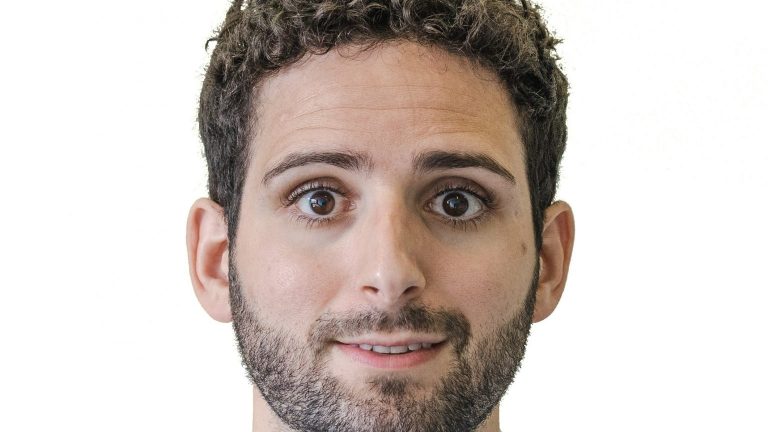
Ph.D at the Laboratory of Ecohydrology, ECHO
Thesis title: Modeling infectious disease dynamics towards informed public health interventions, with applications on COVID-19 and cholera
Centuries after the first cholera pandemics and 160 years after the realization that safe drinking water and adequate sanitation prevent its transmission, cholera remains a threat to millions living in hotspots or at-risk areas. The recent emergence of the new coronavirus disease 2019, COVID-19, and the strain it put on the world’s most advanced healthcare systems recalls the constant risks posed by emerging diseases. Today, communicable diseases cause approx. 15% of global deaths every year. In many cases, the burden of these diseases is preventable through public health interventions. However, taking the right decisions and designing effective policies is an intricate task: epidemics are complex phenomena resulting from the interaction between the environment, pathogens, individuals, and societies.
My thesis explores modeling as a way to reason about infectious disease dynamics from scarce and biased information and to guide decision-makers toward effective policies. The results presented range from scientific insight on the relationship between cholera and rainfall in Juba, South Sudan to the COVID Scenario Pipeline, a modeling framework that produces reports used to inform the response to the COVID-19 pandemic of different governmental entities. Furthermore, the effectiveness of the non-pharmaceutical interventions against COVID-19 in Switzerland is evaluated; and so is the probability of eliminating cholera from Haiti under different scenarios of mass vaccination campaigns. Finally, the development of an optimal control framework towards the effective spatial allocation of vaccines against SARS-CoV-2 in Italy closes this conversation of models. From scientific insights on transmission pathways to weekly reports distributed to health officials, my thesis demonstrates how infectious disease modeling enables informed decision-making by projecting uncertainties under the light of the available evidence. It also highlights the effort needed to tailor the models and inference methods to the specificities of the transmission setting and the research question considered. Methods developed along the way enrich the toolbox available to modelers, to guide policy decisions further toward a reduction of the burden of infectious diseases on communities around the world.
As a postdoctoral researcher at the Gillings School of Global Public Health at the University of North Carolina at Chapel Hill, I am currently working on the direct continuation of my thesis, producing regular forecasts of influenza and COVID-19 transmission while developing novel statistical approaches for infectious disease modeling.
Winners of the
“EPFL Outstanding Ph.D Thesis Distinction in Civil and Environmental Engineering”
2021
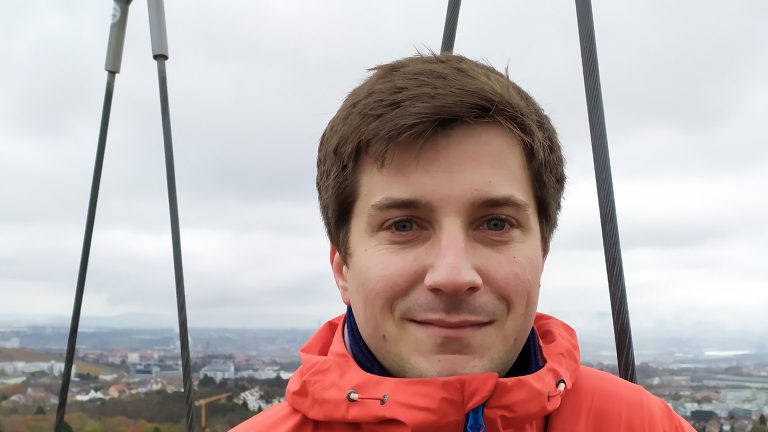
Ph.D. at the Structural Xploration Lab, SXL
Thesis title: Optimum design of low environmental impact structures through component reuse
The construction industry is endangering Earth’s environment and current mitigation efforts to reduce its impact do not suffice. Additional sustainable strategies are needed. One such strategy consists in reusing building components over multiple service lives and in new layouts. Not so long ago, this practice was common everywhere. Today, the trend is reversed: well-established markets, logistics, norms, and building cultures jeopardize the prospect of a systemic application of component reuse; circular economy principles are yet to be implemented on the large scale despite attracting growing interest from governments and design professionals.
My PhD thesis reacts to this context by opening up a new research direction for the field of structural design – one that addresses the following research questions: What environmental benefits would be achieved if reclaimed structural components were to be reused in new structural systems? How to form-find structural systems that make best use of an existing stock of components? How to specify a new stock of structural components in order to allow its reuse in diverse systems? To answer these questions, I developed computational methods that combine state-of-the-art optimization procedures and design-integrated life-cycle assessments and applied them to multiple case studies and built prototypes. Results show that component reuse can significantly reduce the environmental impact of building structures compared to new construction. These attainable impact reductions obtained through applying the proposed methods can fosters a broader implementation of reuse strategies in research and practice.
As a structural engineer at schlaich bergermann partner (Germany), I am currently working on the design of footbridges and lightweight structures with the aim of implementing the sustainable structural design principles that I have acquired while working at SXL.
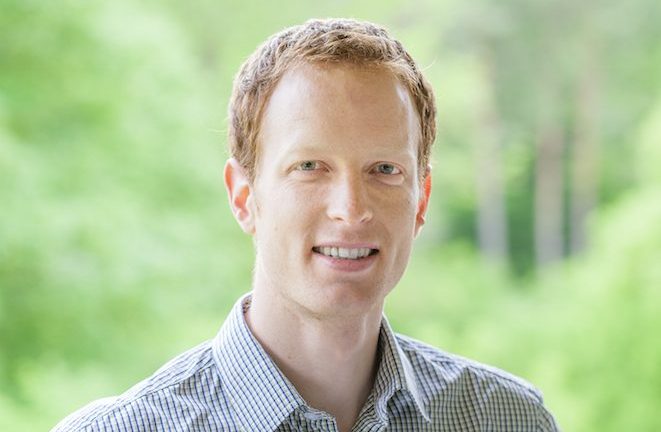
Ph.D at the Environmental Remote Sensing Laboratory, LTE
Thesis title: “Leveraging meteorological radars to investigate the influence of atmospheric dynamics on snowfall microphysics”
Precipitation is the result of a chain of meteorological processes ranging from the large- (>1000 km) to the micro-scale (<1 m). While the transport of moisture and lifting mechanisms leading to cloud formation are mostly governed by dynamical processes, the formation and growth of hydrometeors are ultimately determined by microphysical processes. A proper understanding of the complex interactions between atmospheric dynamics and microphysics is of paramount importance to accurately forecast precipitation. In particular, snowfall microphysics is greatly influenced by dynamical processes, such as turbulence and updraughts. Yet, the impact of atmospheric dynamics on snowfall microphysics remains poorly understood.
In my thesis, I combined meteorological radar observations and atmospheric model simulations to investigate how dynamical processes occurring at different scales can influence snowfall microphysics. The objectives were twofold: (i) collect data on clouds and precipitation during two field campaigns in South Korea and Antarctica, and (ii) leverage this data to investigate how dynamical processes influenced the microphysics of two snowfall events.
Altogether, my thesis offers two unique datasets which are available to the scientific community and can be used for future studies on snowfall microphysics. It also contributes to a better understanding of how atmospheric dynamics can influence snowfall microphysics. In particular, it illustrates how processes occurring at different spatial scales can determine the dominating snowfall microphysical processes.
As a meteorologist at MeteoSwiss, I am currently applying my knowledge to forecast the weather for the western part of Switzerland. My expertise in snowfall microphysics and weather radars is especially useful to forecast and diagnose intense snowfall.
Winners of the
“EPFL Outstanding Ph.D Thesis Distinction in Civil and Environmental Engineering” 2020
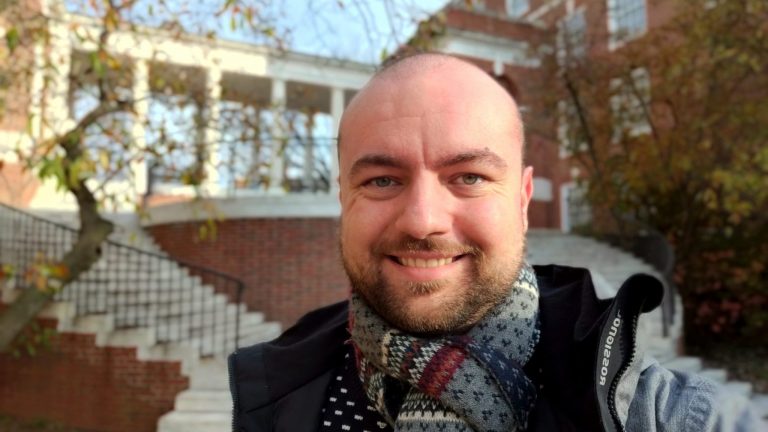
Ph.D at the Computational Solid Mechanics Laboratory, LSMS
Thesis title: Bridging scales in Wear Modeling with Volume Integral Methods for Elastic-Plastic Contact
Friction and wear are fundamental tribological phenomena that affect many aspects of our society: from the gears of a Swiss watch to car brakes and earthquakes. Despite being integral parts of everyday life, friction and wear remain elusive to quantitative predictions. Their systematic study, since the seminal experiments of Da Vinci, Amontons and Coulomb, has been quasi-exclusively experimental. This limits our capacity to understand tribological systems to those that can be reproduced experimentally. Perhaps the most challenging factors are the profoundly multi-scale and multi-physics aspect of both friction and wear, as well as the difficulty of observing what occurs at frictional interfaces.
Due to natural or artificial roughness, things that appear in contact at the macro-scale actually only interact on an area that is much smaller than their apparent contact area. The processes that give rise to macroscopic friction and wear occur that the micro-contacts that make up this “true” contact area. During my thesis, I have developed simulation methods to accurately compute contact interfaces with multi-scale roughness. Because the true contact area is small, contact pressures can be very large, causing plastic (irreversible) deformation of the bodies in contact. To account for this effect, I developed a new approach to volume integral methods. My contributions allowed large scale simulations of plastic rough contact, which contributed to the understanding of the role of plasticity on the formation of cracks that can lead to wear debris detachment.
As a postdoctoral fellow at Johns Hopkins University in Baltimore, I study the micro-scale friction mechanisms of self-assembled monolayers and the wear of polymer systems.
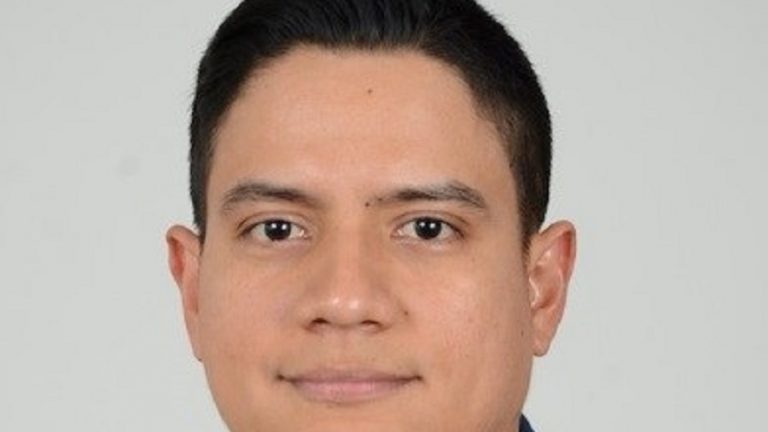
Ph.D at the the Laboratory of Ecological Systems, ECOS
Thesis title: Alternative land use change scenarios for the expansion of a
more sustainable agriculture in the tropics.
Expansion of oil palm plantations in the tropics, particularly in Southeast Asian countries, has been blamed for unprecedented rates of deforestation in recent decades. The continuing expansion of oil palm agriculture across tropical countries poses significant threats and pressure to ecosystems and potentially the global climate. Along my PhD work, I assessed the impacts of alternative pathways for a more sustainable development of oil palm agriculture with a focus on carbon and soil biogeochemistry.
In general, expansion of oil palm in Latin-America has not been at high deforestation cost because land previously cleared for other agricultural uses has often been used. Based on a long-term chronosequence in Colombia encompassing two-cycle plantations (over 56 years) on former pastures areas, I demonstrated that oil palm cultivation can be carbon neutral from an ecosystem standpoint (considering both the development of the plant biomass and the soil organic matter). I also found that a second investigated deforestation-free land use change scenario, converting savanna into oil palm, led to a positive ecosystem carbon balance. In parallel with these two positive ecosystem carbon outcomes at the ecosystem level, other important soil biogeochemical characteristics, i.e. soil biological activity, showed promising trends for the sustainability of oil palm agroecosystems if more ecologically oriented management practices are adopted, in particular in promoting organic inputs.
It is concluded that for a pathway toward sustainability in the eminent expansion scenario of oil palm plantations, emphasis should be put on degraded pastures or degraded savannas if they cannot be restored. Currently, as a post-doctoral fellow at ETH, I am integrating and synthetizing the data and insights produced by research groups of a wide range of expertise in natural science in the frame of the Oil Palm Adaptive Landscapes (OPAL) project.
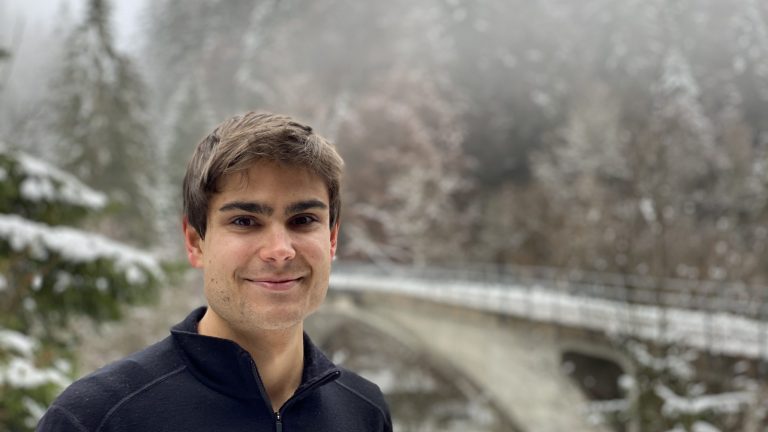
Thesis title: Measurement-system design for structural identification
Ph.D. at the Applied Computing and Mechanics Laboratory (IMAC) and Future Cities Laboratory, Singapore-ETH Centre.
The management of existing civil infrastructure is challenging due to evolving function requirements, aging and climate change. Civil infrastructure often has hidden reserve capacity because of the conservative approaches used in construction design and practice. The information collected through sensor measurements has the potential to improve knowledge of the structural behavior, such as the maximal load-bearing capacity of a bridge. In this situation, the design of the monitoring system is crucial as the information collected during load testing depends on this choice. However, this task is usually carried out by engineers using only qualitative rules of thumb and experience, limiting the information gain on structural behavior during monitoring.
The aim of the thesis was to develop algorithms to design measurement systems. New methods have been presented in order to either maximize the information gain of a sensor configuration or recommend an optimal solution based on multiple conflicting performance criteria. Additionally, a methodology has been introduced to assess whether monitoring information can influence decisions on asset management. Results on three full-scale bridges and one excavation site have shown that an optimal measurement-system design leads to better understandings of the structural behavior.
As a post-doctoral fellow at EPFL in the Laboratory for Maintenance and Safety of Structures (MCS), I am currently working on new diagnostic tools and innovative maintenance strategies to retrofit damaged bridges.
Best Poster Award 2023
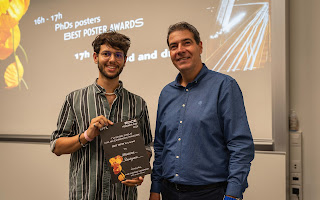
Global Response of Glacier-Fed Stream Bacterial Microbiome to Climate Change
The poster “Global Response of Glacier-Fed Stream Bacterial Microbiome to Climate Change” delves into the implications of climate change on the glacier-fed stream ecosystem. Using a modelling approach combined with a global sampling of glacier-fed streams gathered by the Vanishing Glaciers Project, this study aims at understanding how these unique ecosystems will be altered by the combined effect of climate change and glacier shrinkage, especially the bacterial communities. Under future conditions, the latter are predicted to overall increase in abundance as primary production increases. However, this growth is accompanied by ecological shifts and we highlight potential risks to specific taxa. Additionally, the modelling approach enabled to improve our comprehension of how climate, glacier influence, and physicochemical factors interplay to shape glacier-fed stream ecological communities.
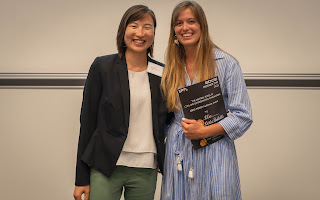
The SARS-CoV-2 pandemic highlights the need to understand human mobility for disease control. Mobility patterns, vital in virus transmission, require modeling individual behaviors. The epidemiological models can be categorized into three types: compartmental, network-based, and activity-based. Although activity-based models demand greater computational resources, they allow a more detailed representation of individual behaviors, positioning them as critical for predicting the spread of a disease. However, the literature indicates that these models tend to focus primarily on infection probabilities, overlooking personal choices like testing decisions. This study refines the activity-based model by integrating latent states for agents’ behavior, combining infection probabilities, and testing propensities based on health and socioeconomic factors.
A core element of our model is the ‘awareness’ indicator modeling if an individual knows to be infected. From a mobility standpoint, awareness is crucial as an individual’s activity-travel behavior is altered only when being aware of the infection. Using a dynamic, fully disaggregated model, we trace each individual’s decision-making sequence, offering a detailed perspective on testing decisions and daily infection dynamics.
Best Poster Award 2022

Impacts of Extreme Precipitation on Alpine Reservoirs
This poster is about the investigation of the impacts of extreme precipitation and drought events on Alpine reservoirs. First, a comparison of traditional and novel approaches for determining the return periods of extreme events is presented. These results, in combination with general expected changes in precipitation in Switzerland (both average and extreme) are used to generate precipitation (or drought) sample scenarios across different seasons. Potential impacts on reservoir water levels and the resulting effects on electricity production potential in various seasons are then shown. The important point is that not all reservoirs are equally vulnerable to the same type of event or at the same time of year. Therefore, understanding the spatial dynamics of extreme events and assessing the impact risk at a local level is a critical next step.
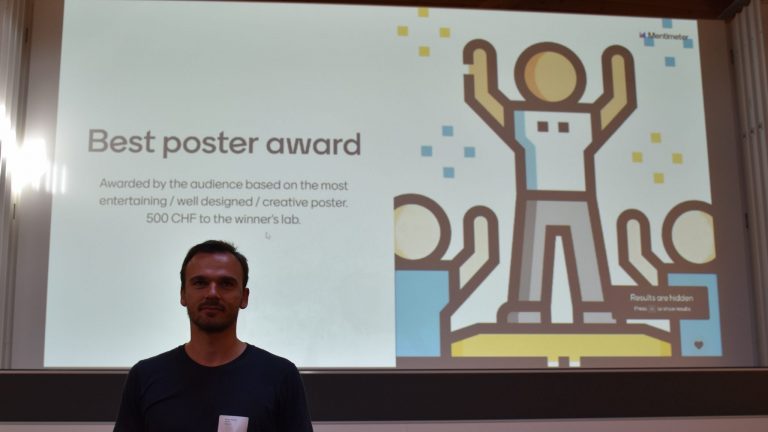
The poster design is symbolically linked to cracks in concrete.
Cracked concrete structures are typically acceptable, but not always. There are different conditions when cracks have to be verified. One of the cases when cracks might be problematic refers to stress concentrations in steel reinforcing bars close to cracks due to the dowel action (the transverse force causing the local bending of the reinforcement).
The poster presents relevant steps of an experimental investigation on the dowel action in concrete structures. First two steps show the test set-up and a specimen which is equipped by advanced measurement devices such as Digital Image Correlation (DIC) and Optical Fibres. Representative results based on these measurements are treated in steps 3-5. The step 6 at the bottom of the poster gives a chance to ask a question.
Mobility Award winners
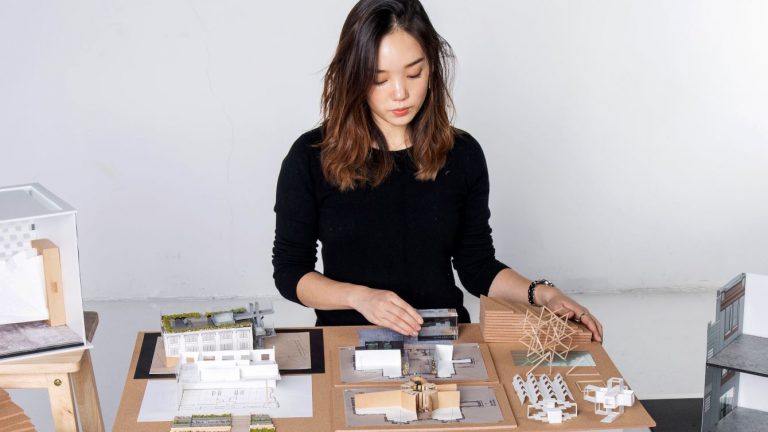
As a member of the Laboratory of Integrated Performance in Design (LIPID), my PhD research focuses on exploring the dynamic elements of window views and their impact on the health and well-being of building occupants. Over the past years, I have conducted experiments to examine the effects of different types of movement and changing daylight conditions on participants’ view-out experiences and developed methodologies to effectively incorporate dynamic elements of outdoor environments into views-out research. During my academic visit to the Technical University of Vienna (TU Wien), I will collaborate with Assistant Prof. Milica Vujovic and the Hietzing psychiatric hospital. Our work will involve site analysis, urban research, and interviews and observations with healthcare workers and researchers in psychiatric hospital design. This will help us understand how architecture shapes human experiences and occupant behaviors, focusing on the impact of accessible window views and access to nature.
This collaboration is expected to provide invaluable insights into the practical applications of my research on views-out quality within a healthcare setting, where well-being and addressing basic human needs is crucial. It also has the potential to enrich and refine, or perhaps even challenge, the applicability of my PhD research. Additionally, the collaboration extends to Ulrike Brandi Licht, an international architectural lighting design office in Hamburg. They will support the project by providing expertise and guidance in architectural design principles, helping to create high-quality visual and descriptive representations of the data. This ensures that the research outcomes are both scientifically robust and practically applicable. I am confident that this experience will enhance my research and contribute to the broader field of built environment research by emphasizing the importance of qualitative data in capturing the human experience.
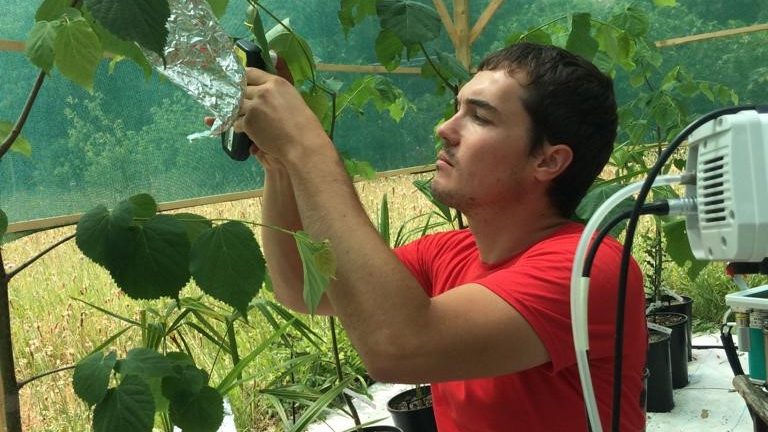
In the frame of my Ph.D. studies at the Plant Ecology Research Laboratory (PERL), I study the spread of non-native evergreen tree species in Switzerland, in particular invasive palm trees. In natural forests, these exotic species compete with the local ones and may alter their growth and survival, having negative consequences on biodiversity, wood production, nutrient cycling, etc.
The effect of drought events on these species is poorly understood and could have positive or negative impacts on their spread. For this reason, I am interested in measuring physiologic traits related to reduced water availability in exotic plants.
During my academic visit to the University of Tasmania (UTAS, AU), I will have the opportunity to work with Prof. Tim Brodribb, who is a renowned ecophysiologist specializing in plant water transport and use. In particular, he developed a novel, non-destructive method for measuring drought impacts on plants’ leaves and stems using cameras. Under his expert guidance, I would like to learn how to use this method and develop a measurement station at EPFL.
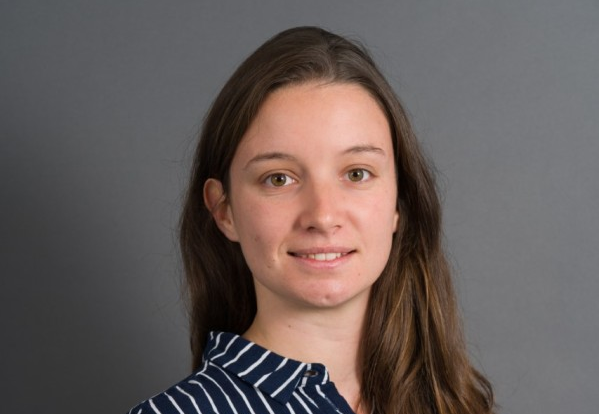
A member of the Environmental Computational Science and Earth Observation Laboratory (ECEO)
In collaboration with Swisstopo, my PhD project is centered around the application of deep learning techniques to map mountain ecosystems by leveraging diverse data sources, including remote sensing imagery, crowdsourced species observations, and textual descriptions. During the initial stages of my PhD, I developped an interpretable and interactive approach for characterizing terrestrial ecosystems based on aerial imagery provided by Swisstopo.
The next phase of my project aims to integrate species observations obtained from citizen scientists database such as the PlantNet Project. This task poses significant challenges, as crowdsourced observations are susceptible to various sources of biases, from the irregular collection process to species misidentification.
My research stay at the National Institute for Research in Digital Science and Technology (INRIA) in Montpellier, France, is a great opportunity for working alongside Prof. Diego Marcos and Prof. Alexis Joly, member of the PlantNet Project since its start. This collaboration allows me to gain valuable insights into how to effectively exploit crowd-sourced ecological data, ultimately enhancing the characterization of alpine ecosystems.
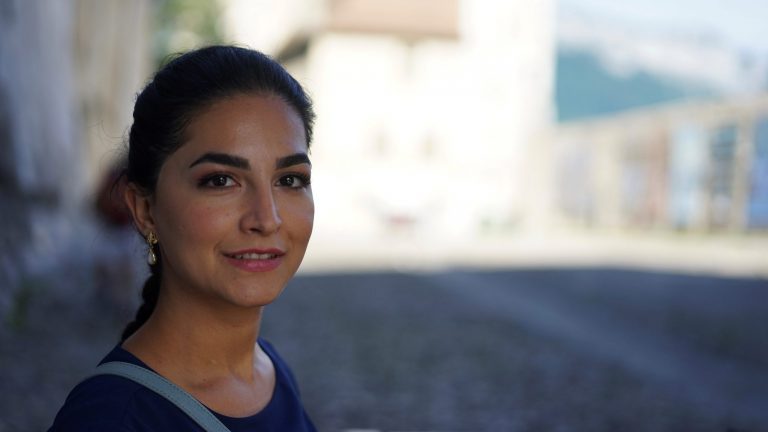
As a member of the Transport and Mobility Laboratory (TRANSP-OR), I am conducting research on integrating interactions into activity-based models. We have developed a methodology that reconstructs the daily activity schedules of individuals in a household, explicitly accommodating complex interactions among household members such as allocation of the car to household members, escorting children, joint participation of household members in activities, and sharing rides. This methodology uniquely allows capturing multiple interaction dimensions within the same framework. This framework differs from the existing activity-based models treating individuals as isolated agents, which are limited in their demonstration of behavior. Understanding and predicting complex behavior and interactions is the key to better demand-side management and adapting infrastructure systems (transportation, energy, etc.) to deliver critical services that meet the needs of society. The model works well with multi-member households and captures complex behaviors and interactions.
The Human-Centric Modelling Laboratory, directed by Dr. Tim Hillel at University College London (UCL), is focused on developing decision-aid models and tools to plan future built environments (spanning a variety of fields such as mobility, energy consumption, or infrastructure maintenance) by considering holistic systems centered around people. My academic visit to UCL would allow me to work more closely with Dr. Tim Hillel on the application of our developed methodology in addition to exploring other practical extensions of our framework in collaboration with researchers at UCL.
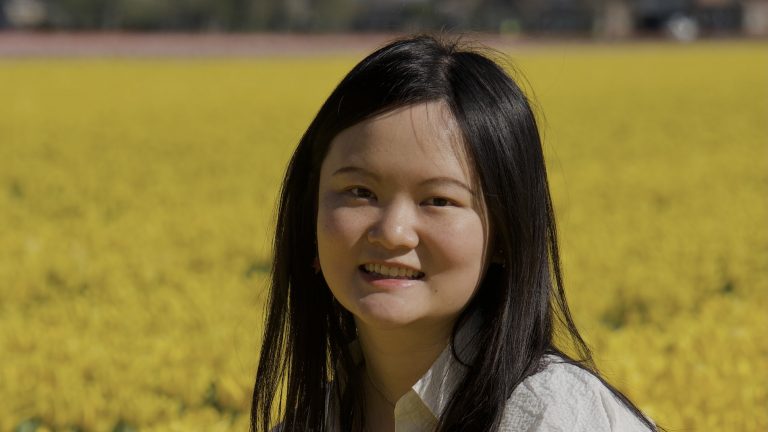
Member of Earthquake Engineering and Structural Dynamics Laboratory (EESD)
Masons with years of training are needed for the construction of masonry structures. However, the scarcity of skilled masons motivates us to create intelligent construction robots for improving the productivity of the construction industry aiming at the reduction of its environmental impact. In this regard, my PhD thesis focuses on the development of efficient methods for guiding robots to perform stone-stacking tasks aiming at specific design requirements, such as seismic load resistance. Currently, I am developing an image-based stacking algorithm for finding the best sequence of actions for placing stones during the construction of stone masonry walls. Given photos of available stones, the algorithm tells robots how to select stones and where to place it. However, the computational cost of this approach could be prohibitive for real-time applications.
During my academic visit to the University of Minnesota, I plan to work with Prof. Dos Santos to create a model-free solution based on reinforcement learning. Prof. Dos Santos is an expert in the development of numerical methods for optimization and uncertainty quantification of complex engineering systems. His expertise in machine learning will help me develop an efficient decision-making framework for large-scale buildings made of irregularly-shaped stones. We expect the method to be broadly useful for application in autonomous construction.
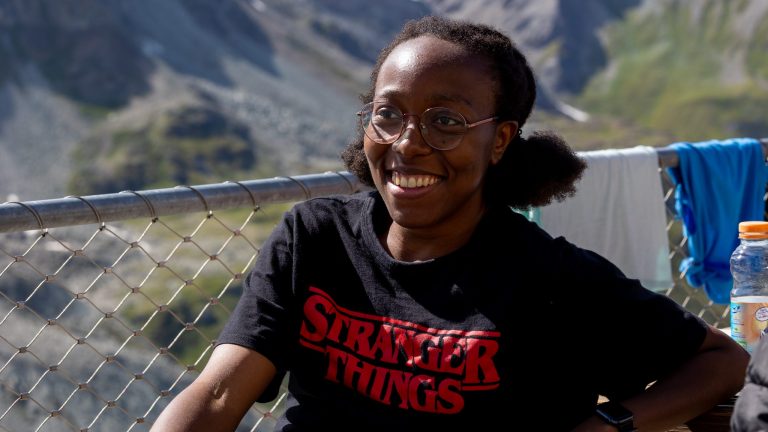
As a member of the Transport and Mobility Lab (TRANSP-OR), I am developing and activity-based framework for the estimation of transport demand, using optimization to simulate daily activity schedules of a given population. The fundamental assumption of our framework is grounded on first behavioral principles: we consider that individuals are sensitive to time, and schedule activities in order to maximize the utility or satisfaction they gain from the resulting plan. The model takes as input options of activities, modes and locations, and returns a distribution of feasible schedules that is guided by the preferences of the individual (e.g. desired start time and duration for each activity).
The Human-Centric Laboratory of Dr. Tim Hillel at University College London (UCL) develops decision-aid models and tools to plan future built environments (spanning a variety of fields such as mobility, energy consumption, or infrastructure maintenance) by considering holistic systems centered around people. During my academic visit, I aim to investigate methodological extensions to the model, to achieve a highly generalizable framework. It will also be an opportunity to explore practical applications with additional resources and case studies provided by my host institution.
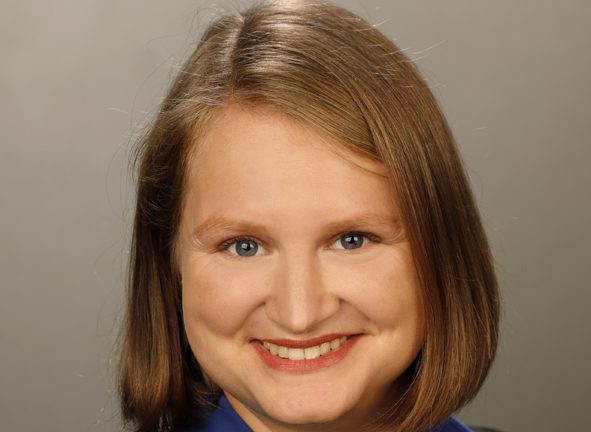
My PhD is set up as a collaboration between the environmental remote sensing laboratory (LTE) at EPFL and the radar, satellite and nowcasting division (RSN) at MeteoSwiss. The research focuses on investigating the occurrence and behaviour of supercells, a particularly severe type of thunderstorm, in Switzerland. Using operational radar data from MeteoSwiss we established a first time description of the spatio-temporal occurrence of supercells in Switzerland. To better understand the interaction of these severe thunderstorms with the complex Alpine terrain, we aim to reproduce typical supercell cases in a mesoscale meteorological model.
The Mesoscale and Microscale Meteorology Laboratory (MMM) at the National Center for Atmospheric Research (NCAR) in Boulder, Colorado (USA) have extensive expertise in mesoscale modelling and mountain meteorology. In collaboration with Dr. Richard Rotunno we hope to disentangle supercell dynamics and orographic influences, based on the cases observed in the Alpine region. The interactions of severe thunderstorms with complex terrain are still poorly understood and advances in this area benefit the convective research community in general. Combining the observational expertise of LTE and RSN with the dynamical and modelling experience of MMM offers an excellent opportunity to expand the collaborative expertise contributing to this research.
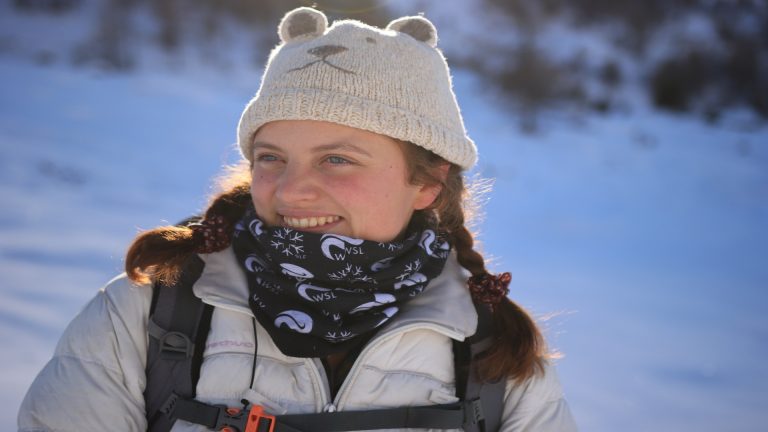
As a member of the Plant Ecology Research Lab (PERL), I investigate the impact of tree species interactions on tree plastic physiological responses to heat and drought stress. Indeed, in the context of climate change, trees can adapt their functional trait, and their interactions with other individuals can modulate their response to abiotic stress and reduce the negative impacts of extreme events on forests.
During my Mobility project, I have the great opportunity to work with the expert in plant physiological ecology, Dr. Alberto Vilagrosa in the Mediterranean Centre for Environmental Studies (CEAM) institute hosted at the University of Alicante, Spain. Together, we will conduct physiological measurements in natural Mediterranean forests in Spain exposed to hot droughts. Moreover, I will be trained on a specific hydraulic machine that I will use for further experiments back in Switzerland during my Ph.D. studies.
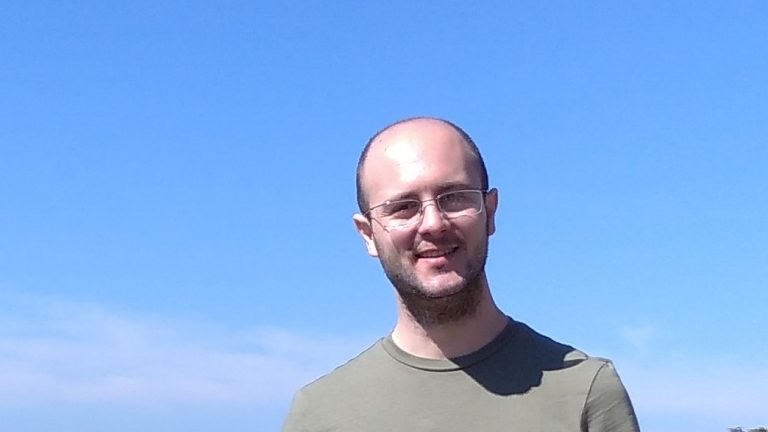
My Ph.D. research focuses on on-demand mobility services. In the first years of my Ph.D., I developed knowledge about the effects of such services in traffic conditions of an urban area. To date, our simulations enlightened the impacts that the number of available drivers and the passengers’ attitude towards shared-ride options has on congestion. It was possible to show how service providers can attract drivers to decrease waiting times faced by passengers at the expense of deteriorating average traveling speeds for everyone in the city.
The Laboratory for Innovative Mobility Systems (LIMOS), led by Prof. Yafeng Yin at the University of Michigan, has contributed to the literature of emerging transportation technologies during the last 20 years. For my academic visit to LIMOS, I aim to develop policies on innovative on-demand transportation modes capable of improving the welfare of society with a sustainable outcome for all stakeholders, mitigating negative externalities. Overall, the experience obtained there will allow me to expand my research to a more comprehensive side of mobility problems.
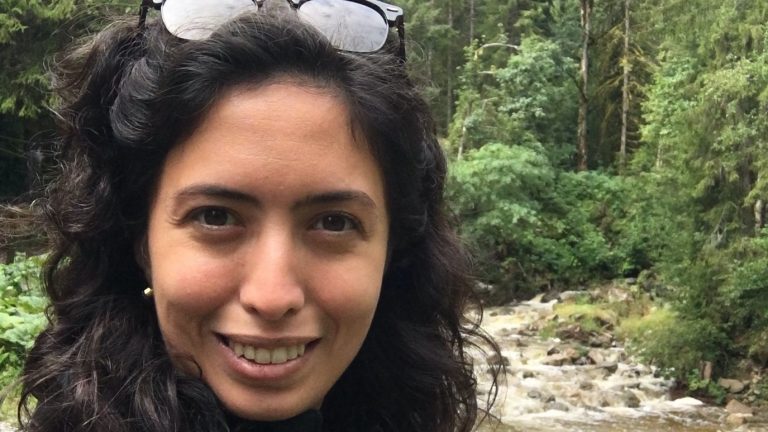
After joining Transport and Mobility Laboratory (TRANSP-OR) in September 2018, I have started working on demand-based operations of vehicle sharing systems (VSS). In the first stage of my PhD thesis, we have conducted an extended literature review and proposed a holistic framework that identifies the relations between different decision levels, different actors, and different layers. As an outcome of the framework, we have seen that there is more focus on supply aspects than demand aspects in the literature. One of the main issues for this skew is because the disaggregate data collection and developing a demand model are exhaustive and costly.
To address this issue, we have decided to use the Multi-Agent Transport Simulation (MATSim). The main idea is to utilize MATSim as a ground truth and analyze different configurations and their relations to rebalancing operations. Assist. Prof. Joseph Chow, from the C2SMART lab in New York University (NYU) Tandon School of Engineering, and his team have been working on the rebalancing strategies for car sharing services using MATSim. His expertise on this topic will contribute developing a more structured framework according to the advantages and limitations of MATSim.
Other awards won by EDCE students

ENAC Doctoral Research Award in the field of environmental engineering for the publication entitled:
“Seascape genomics as a new tool to empower coral reef conservation strategies: An example on north-western Pacific Acropora digitifera.”
The future of coral reefs is under threat since anomalous heat waves are causing the death of reef building corals around the world. Without corals, the entire reef ecosystem is expected to collapse, threatening the survival of up to one third of marine wildlife. Despite the catastrophic perspectives, a glimmer of hope is brought by corals that persist at reefs exposed to recurrent heat waves. Evolutionary adaptation might underpin these observations.
In this publication, we used an approach called seascape genomics to characterize the adaptation to heat stress in a coral population from Japan. We first used remote sensing data to portray patterns of thermal stress across all the reefs of the study area, and then analyzed the genetic variation of corals living across this thermal gradient. We uncovered genetic traits that are more frequent in corals living at reefs exposed to recurrent heat stress. Finally, we predicted the distribution of these adaptive traits for every reef of the study area. This information is of paramount importance, as it constitutes a to-date missing criterion to prioritize reef based on their adaptive potential.
As a postdoctoral fellow at LASIG, I am currently working on extending the seascape genomics approach to other reef systems around the world.

